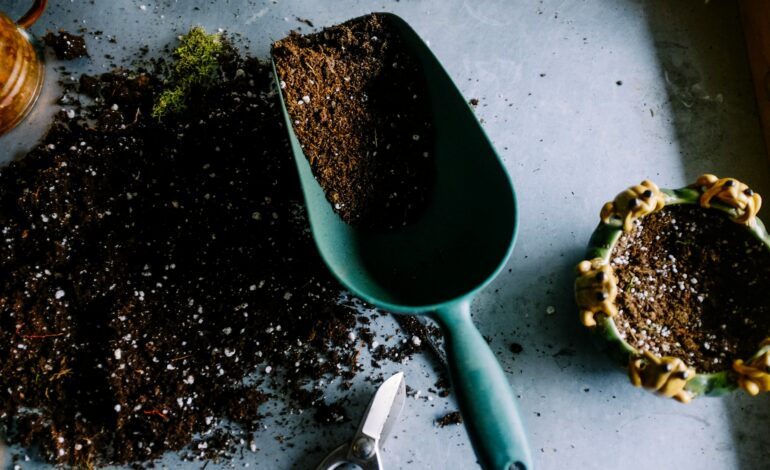
Essential Tips for Growing Healthy Plants in Metal Raised Beds
Gardening with metal raised beds offers a unique blend of durability and aesthetic appeal, making them an excellent choice for both novice and seasoned gardeners. Ensuring that your plants thrive in these structures requires understanding the nuances of their maintenance and care. From selecting the right soil mix and plants to optimizing water drainage, each step is crucial in fostering a lush garden. This article provides essential tips that will guide you through the process of growing healthy plants in metal raised beds. Whether you’re tackling common gardening challenges or looking to enhance your existing garden setup, these insights will help you maximize the benefits of using metal raised beds, ensuring a vibrant and sustainable garden space.
Table of Contents
1. Mastering Maintenance for Long-Lasting Raised Beds
Regular maintenance of your metal raised beds is key to ensuring their longevity and the health of your plants. Begin by selecting the proper metal raised garden beds on carpathen.com and regularly check the metal for any signs of rust or corrosion. Early detection makes it easier to address the issue with rust-resistant paints or coatings.
Keeping the edges and surrounding areas free of debris will prevent moisture buildup, which could potentially lead to corrosion. Periodically check the soil level within your beds; as organic material breaks down, it may require topping up with fresh compost or nutrient-rich soil. Prune your plants to encourage healthy growth and airflow, which helps prevent fungal diseases. Mulching not only assists in moisture retention but also regulates soil temperature and suppresses weeds. Finally, be observant of any shifts in your plants’ health, addressing issues promptly with suitable solutions like natural pest control or appropriate fertilization. Consistent attention to these details will foster a thriving garden ecosystem.
2. Perfecting Watering and Drainage for Thriving Plants
Understanding the watering needs of your metal raised beds is essential to promoting healthy plant growth. These structures can heat up more quickly than other materials, necessitating more vigilant watering practices. It’s crucial to water deeply but infrequently, encouraging roots to grow downwards, which enhances plant resilience during dry spells. Pay attention to the specific needs of your plants; for instance, succulents require less frequent watering compared to leafy greens or flowering plants. Good drainage is vital to prevent waterlogging, which can lead to root rot. Ensure your metal raised beds have adequate drainage holes or consider adding a layer of gravel at the bottom to facilitate water flow. Using a drip irrigation system can provide consistent moisture while minimizing water waste. Applying mulch on the soil surface will also help retain moisture and regulate temperature, reducing the frequency of watering needed.
3. Tips for Seasonal Planting and Rotation
Adopting a strategic approach to seasonal planting and crop rotation in your metal raised beds can significantly enhance soil health and boost plant productivity. Begin by understanding your local climate zones and select crops suited to each season; cool-season crops such as lettuce, spinach, and peas thrive in spring and fall, while heat-loving plants like tomatoes, peppers, and cucumbers perform better in summer. Rotation plays a pivotal role in reducing the risk of soil-borne diseases and pest buildup. Rotate plant families periodically—planting beans in a bed previously home to tomatoes can replenish nitrogen levels in the soil, as legumes naturally fix nitrogen. Additionally, alternating heavy feeders with light feeders or legumes can help maintain nutrient balance in the soil. To maximize space and yield, consider succession planting or intercropping, which involves planting compatible species that mature at different rates. Plan ahead and keep records of plantings to refine your approach each year, ensuring your garden remains productive and resilient across every season.
4. Choosing the Right Location for Your Metal Raised Beds
Selecting the optimal location for your metal raised beds is crucial to ensuring the vitality and productivity of your garden. Begin by assessing the sun exposure in your yard, as most vegetables and flowering plants require at least six to eight hours of direct sunlight each day. Choose a spot that allows your plants to bask in ample sunlight, avoiding areas with excessive shade from buildings or large trees. Also, consider the proximity to a water source, which will make routine watering more convenient. Level ground is preferable to prevent the beds from shifting and to ensure even water distribution. Additionally, be mindful of wind patterns; a natural or constructed windbreak can protect your plants from harsh winds.
Incorporating metal raised beds into your gardening strategy promises a host of benefits and opportunities for cultivating healthy plants. By carefully selecting the right location, tailoring your watering and drainage practices, rotating crops, and maintaining your beds, you can create a nurturing environment for your plants. These beds offer versatility and can enhance your garden’s aesthetic appeal while supporting sustainability and productivity. As you continue to refine your techniques and experiment with different planting strategies, you’ll likely see your efforts rewarded with lush growth and plentiful harvests. Ready to transform your garden into a thriving oasis with metal raised beds?





